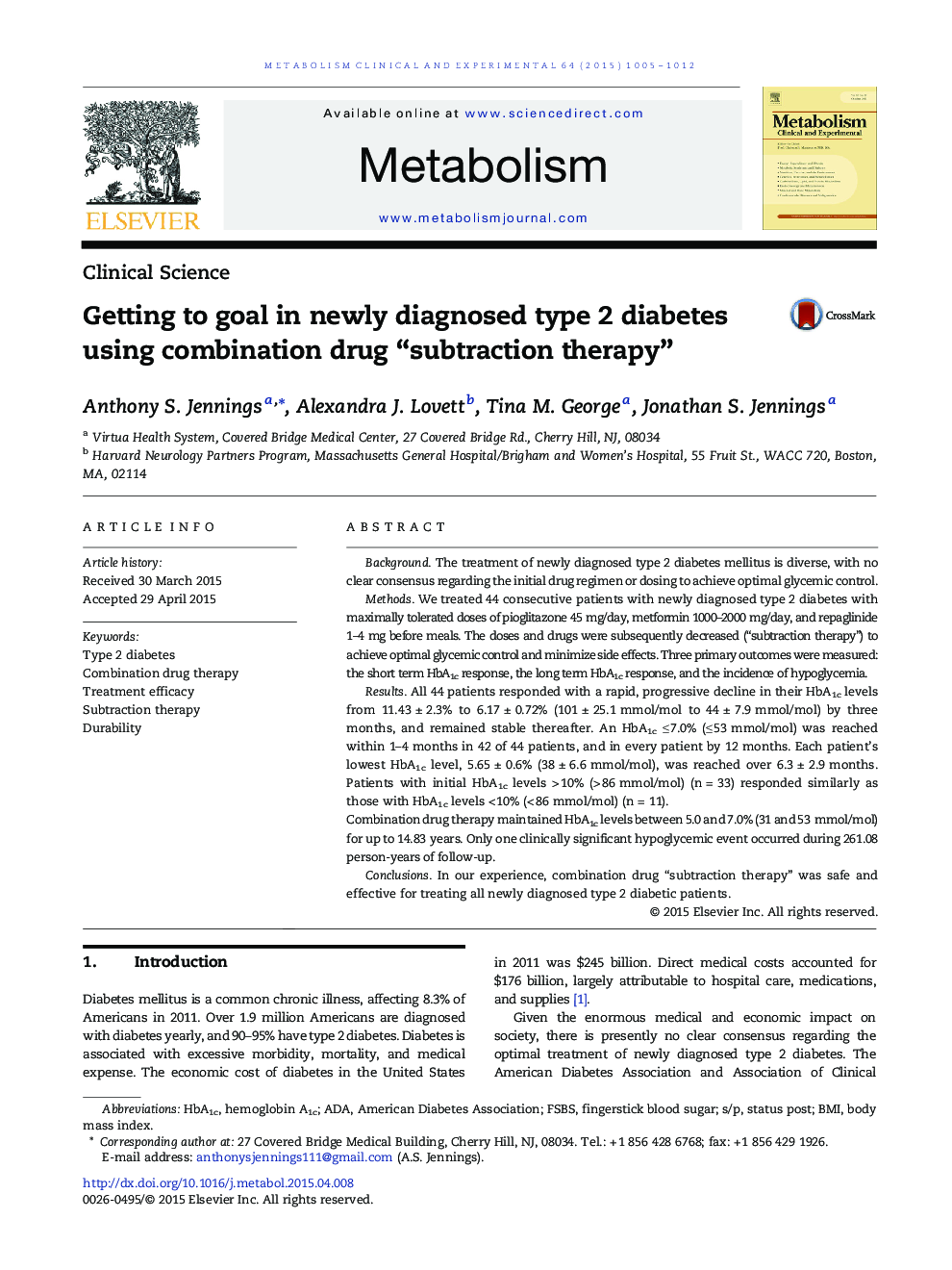| Article ID | Journal | Published Year | Pages | File Type |
|---|---|---|---|---|
| 5903217 | Metabolism | 2015 | 8 Pages |
BackgroundThe treatment of newly diagnosed type 2 diabetes mellitus is diverse, with no clear consensus regarding the initial drug regimen or dosing to achieve optimal glycemic control.MethodsWe treated 44 consecutive patients with newly diagnosed type 2 diabetes with maximally tolerated doses of pioglitazone 45 mg/day, metformin 1000-2000 mg/day, and repaglinide 1-4 mg before meals. The doses and drugs were subsequently decreased (“subtraction therapy”) to achieve optimal glycemic control and minimize side effects. Three primary outcomes were measured: the short term HbA1c response, the long term HbA1c response, and the incidence of hypoglycemia.ResultsAll 44 patients responded with a rapid, progressive decline in their HbA1c levels from 11.43 ± 2.3% to 6.17 ± 0.72% (101 ± 25.1 mmol/mol to 44 ± 7.9 mmol/mol) by three months, and remained stable thereafter. An HbA1c â¤Â 7.0% (â¤Â 53 mmol/mol) was reached within 1-4 months in 42 of 44 patients, and in every patient by 12 months. Each patient's lowest HbA1c level, 5.65 ± 0.6% (38 ± 6.6 mmol/mol), was reached over 6.3 ± 2.9 months. Patients with initial HbA1c levels > 10% (> 86 mmol/mol) (n = 33) responded similarly as those with HbA1c levels < 10% (< 86 mmol/mol) (n = 11).Combination drug therapy maintained HbA1c levels between 5.0 and 7.0% (31 and 53 mmol/mol) for up to 14.83 years. Only one clinically significant hypoglycemic event occurred during 261.08 person-years of follow-up.ConclusionsIn our experience, combination drug “subtraction therapy” was safe and effective for treating all newly diagnosed type 2 diabetic patients.
